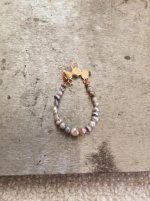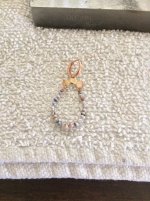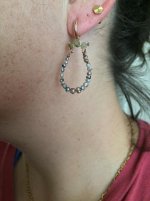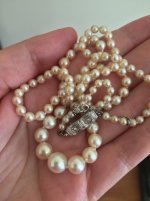I don't take the time to chat here cause I am busy "on the road " with customers as I have done for 4 decades. I was contributor to an article in the Wisconsin History magazine in 2013 on the Pearl Rush of the late 1800's and early 1900's on the Upper Mississippi River basin. I have on entrusted to me the correspondence of a noted pearl dealer of that era. For the past six months we have organized the 100's of letters based on topic. Pearls, ginseng, firs, and misc antique articles for example. Just as a guide, and the first comments published, here, about the quantities of natural pearls from the aforementioned region. This dealer sold, from 1922 to 1924 a little over $61,000 in dollars . Some guide as to today's value multiply by 20. Shipments outside the US were in 100's of ounces. (Because of gold ounces were used instead of gram or pearl grain in this area)
As to to the value of the nice pieces you have. The round or half round have the best value especially mounted or loose. Bags of unmounted are very hard to evaluate because they don't, in spite of being natural, don't have the beauty of cultured especially luster. General public and many jewelers don't understand hence this channel. Some dealers have been able to peal pearls hoping to find better luster 1-2 layers down. I have seen written accounts of the improved appearance adding lots of value. I suspect the tiny pearls around the pieces maybe ocean pearls because the occurrence of that many that match in size and color is unusual. Early jewelry, say 1900 to 1920 may be more likely to have so many small matching pearls. Two or 3 millimeter, plus or minus, were highly regarded, especially if round or half round and in high demand.
I have letters from the Parisian buyers indicating such and they inventory in the 100's of ounces.
I would be wary of the Emerald and pearl. That shape is also common in Chinese fresh water especially early production.
I like the pearl and diamond, unique and saleable.
pearl-man





